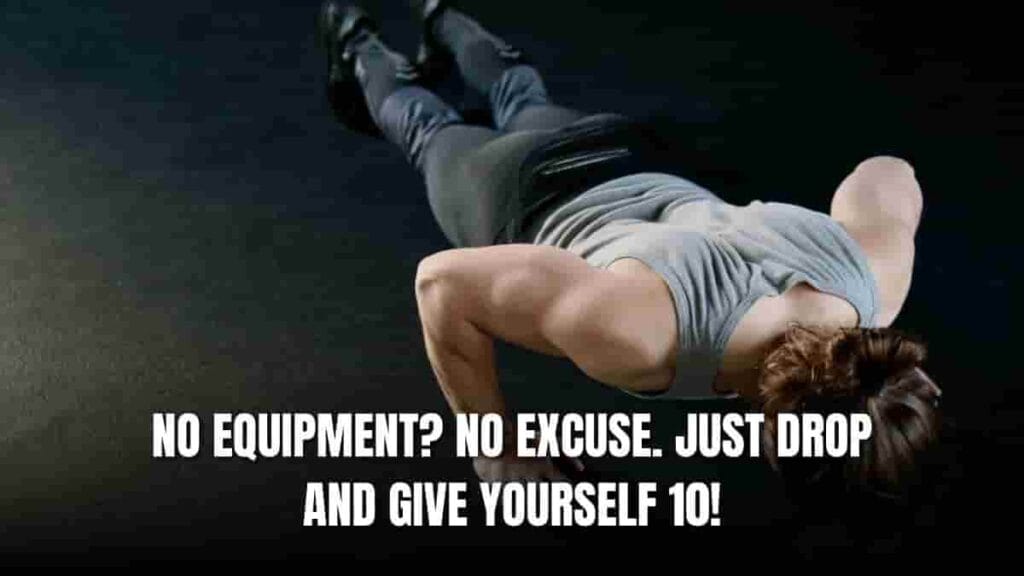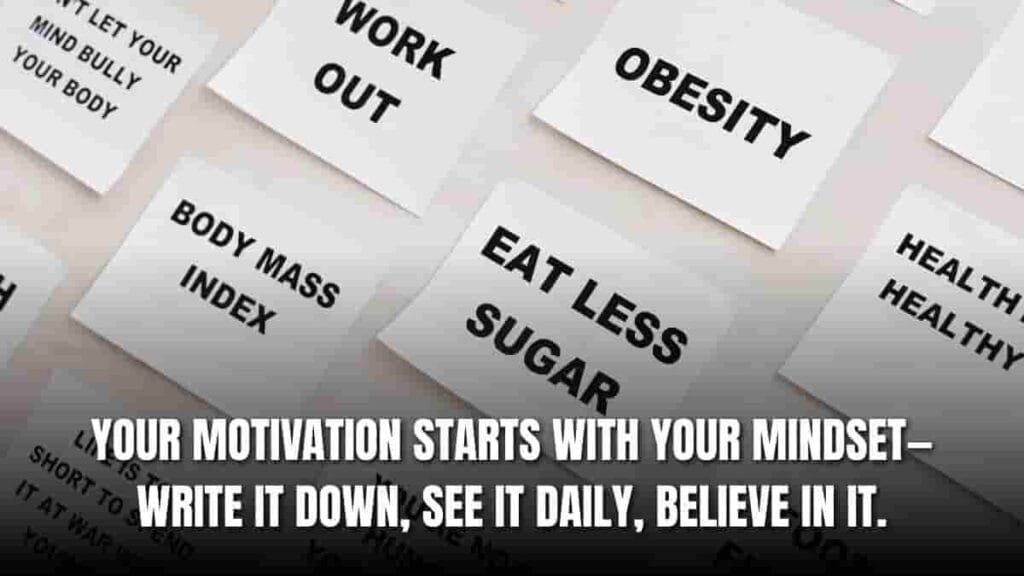Table of Contents
Maintaining the pace of the modern world is a challenge. Between family commitments, deadlines at work, and personal engagements filling up every hour, exercise usually ends up at the very bottom of priorities. Working out does not have to mean more time sucked out of your life. You can stay fit even with a packed schedule. This is a guide on how to do so.
Why Staying Fit Matters—Even When You’re Busy

People often think that there is nothing wrong with missing a workout when they are busy. However, even brief periods of inactivity will impact your energy levels and productivity, and can affect your mental state.
Fitness, in particular physical fitness, should always refer to health and not physical appearance. Physical fitness can is healthy for the heart, strengthens muscle, clears the mind and builds an immune system. Research tells us that just 20-30 minutes of light training every day can diminish the risks of certain chronic diseases, such as heart disease, type-2 diabetes and hypertension.
Key Benefits of Regular Physical Activity:
| Benefit | How it Helps You |
| Boosts energy | Reduces fatigue, enhances focus |
| Improves sleep | Helps fall asleep faster and deeper |
| Enhances mood | Reduces anxiety and depression |
| Builds strength | Improves posture and mobility |
| Supports heart health | Lowers cholesterol and blood pressure |
So, even if you’re short on time, investing in your fitness pays off in every part of your life.
Understanding the Common Challenges
Most of the time, people know they should be exercising. So why do they slack?
“I don’t have time,” is the most frequent excuse that’s given. Between meetings, child care, commuting, and chores at home, it’s just hard to squeeze 30 minutes into the day. Then there are those who are just always tired, without motivation, and many yet don’t understand where to start.
Acknowledging these barriers and then tackling them head-on is the easiest way for anyone to get past the big obstacles that hinder fitness.
How to Build Simple Daily Habits That Keep You Active
It is no obligation to upheave one’s life to pursue physical fitness. A small little change in any given routine could mean a world of difference to someone’s life. Fitness is certainly much more than the gym; it is about the way we move during our day.

Easy Habits To Start Today:
- Take the stairs instead of the elevator and work on leg strength and cardio.
- Walking or cyclcing may be preferable than pushing for short distances.
- Stretch for about five minutes every hour, especially if you sit at the desk.
- Be mindful when doing chores like sweeping, mopping, or gardening. They are all forms of exercising!
- Set a reminder every 30 minutes to stand up and walk around.
These micro habits indeed go far in these calorie-burners and provide for ample flexibility during the day, whether or not one reaches for a formal-time workout.
Morning Fitness Routines: Starting the Day Strong
An early workout energizes you for the entire day. It should not always be an intense or extended exercise. A circuit of about 10-15 minutes at a quick pace is enough to wake up both body and mind. Movement in the morning brings about focus, kick-starts metabolism, and paves the way for healthy decisions later on.
Sample Morning Routine (15 minutes):
- Hydrate – Drink a glass of water.
- Stretch (3–5 minutes) – Focus on arms, legs, back.
- Quick workout (7–10 minutes) – Try 2 rounds of:
- 20 jumping jacks
- 10 squats
- 10 push-ups
- 30-second plank
End with 2 minutes of deep breathing or meditation. It refreshes your mind and reduces morning anxiety.
Make the Most of Your Lunch Break
Exercise could be squeezed in during your lunch hour. That means hanging up the phone, slipping into walking shoes, or sneaking in a mini-workout session. Mornings might give time for a bit longer, while afternoons might gift only 10 to 15 minutes of activity to energize you for the rest of the day.

Lunchtime Fitness Ideas:
- Walk around your building or neighborhood.
- Perform some quick exercises such as chair squats, lunges, and stretches.
- Eat light; avoid greasy food. Grain bowls, salads, or wraps are good choices.
Eating right at lunchtime help prevent sluggishness in the afternoon and keep you on the path to good health.
Check Out – Heart Attack Symptoms in Women Over 50: What Every Woman Should Know
Evening Workouts That Are Short Yet Effective
Even if you’re exhausted after work, you don’t have to skip exercise. In fact, a relaxing movement session at night can improve your sleep and help release stress.
Try These Quick Evening Activities:
- 10-minute yoga flow – helps your body wind down.
- Dance workout – put on your favorite songs and move freely.
- Family walk – great bonding time and gentle exercise.
Even something as simple as stretching while watching TV helps improve circulation and keeps your body active.
Home Workouts with No Equipment Needed
Home workouts are perfect for busy people. You save time commuting and can squeeze in a session at any hour.
Bodyweight exercises are effective and require zero gear. They can be done in your bedroom, living room, or even your kitchen.
15-Minute Full-Body Routine:

| Exercise | Time |
| Jumping Jacks | 1 min |
| Squats | 1 min |
| Push-Ups | 1 min |
| Plank | 1 min |
| Rest | 30 sec |
| Repeat the circuit 2–3 times |
You can also use free apps like FitOn, Nike Training Club, or Blogilates for guided routines.
Stay Active at the Office (or Desk Job)
If you are at a desk whole day, the body gets to stiff and sore. Movement, a little here and there, is crucial to avoid back pain, bad posture, and circulation issues.
Tips for Desk Workers:
- Standing every 30 minutes to stretch.
- Make variation your process: stand for a while and then sit.
- Leg lifts and shoulder rolls while seated; desk push-ups, if you have the space.
- Take walking calls instead of sitting through phone meetings.
Even a few minutes per hour adds up and keeps you feeling fresh.
Eating Healthy When You’re Always on the Go
A person’s physique makes much more than clocking workouts-it includes the kind of food that is given to it. A proper diet helps energy maintenance, concentration increase, and healing.

Healthy-Eating Tips:
- Prepare your meals on the weekends and you’ll have grains, veggies, and proteins ready to go.
- Stock up your snacks: bananas, yogurts, nuts, and energy bars.
- Water-water-water: dehydration could sometimes disguise as tiredness or hunger.
- Stay clear of sugar and fried food as those put you down and nurture fatty pouch formations.
Fitness Apps can assist you with staying accountable and making better choices.
Tech Tools to Keep You Motivated
Using the right technology can keep your fitness goals on track. When you’re busy, reminders, trackers, and challenges help you stay consistent.
Recommended Tools:
- Google Fit / Apple Health – Tracks your steps and heart rate.
- 7-Minute Workout App – Great for high-intensity short sessions.
- Habit tracking apps like Habitica or Streaks.
- Smartwatches / Fitness Bands – Help you track calories, sleep, and daily activity.
You can even set your calendar to block out 15 minutes a day for fitness like a meeting!
Use Weekends to Catch Up and Recharge
If your weekdays are chaotic, use weekends to focus on your well-being. It’s the best time for longer activities or outdoor movement.

Weekend Fitness Ideas:
- Go hiking or biking with friends.
- Try a new fitness class (Zumba, yoga, Pilates).
- Play sports with your kids or join a group run.
- Spend time gardening or doing a home project.
Weekends allow for active recovery, and they set the tone for a healthier week ahead.
Work-From-Home? Here’s How to Stay Active
Working from home often means fewer steps and more screen time. But it’s still possible to stay active.
Try This:
- Start the day with a short stretch session.
- Do 10 squats or jumping jacks between meetings.
- Create a mini home gym space—even just a mat and dumbbells help.
- Use apps to remind you to take breaks.
Staying physically engaged improves productivity and prevents mental burnout.
Check Out – Sleep & Weight Loss: Why Poor Sleep is Making You Gain Weight
Fitness with Kids and Family Life
Having kids doesn’t mean putting your health last. In fact, staying fit sets a good example for your family.
Fun Family Fitness Ideas:
- Dance parties in the living room.
- Play tag, soccer, or jump rope in the yard.
- Go on weekend nature walks or bike rides.
- Follow YouTube family workouts like PE with Joe or Cosmic Kids Yoga.
When you make fitness fun, your kids will join in—and everyone wins.
Set Realistic Goals to Stay on Track
The biggest mistake people make is setting unrealistic fitness goals. When you’re busy, your routine has to be flexible and achievable.
SMART Goal Tips:
| Element | Example |
| Specific | Walk 6,000 steps daily |
| Measurable | 3 workouts per week |
| Achievable | 10-minute home workouts |
| Relevant | Improves health for work-life balance |
| Time-bound | See progress in 30 days |
Focus on progress, not perfection. Even small wins build momentum.
Staying Motivated: Mindset is Everything
Your mindset may either support or hamper your fitness journey. Be kind to yourself and keep moving forward—in any case, life can get uproarious.

Give yourself a little motivation:
- Write down your “why” on sticky notes, and place them on a mirror or fridge.
- Track your achievements in a journal or app of your choice.
- Reward yourself for good behavior with something other than food (such as merch or attire).
- Join an online group or buddy up with a friend for accountability.
No, you don’t have to be perfect. All you need to do is keep going.
Check Out – How to Reduce Belly Fat in One Week: Fact vs. Fiction (2025 Guide)
FAQs on How to Stay Fit in Busy Schedule
Q1. Can I stay fit by working out only 10 minutes a day?
Yes! Short workouts, especially high-intensity interval training (HIIT), can be very effective when done regularly.
Q2. What if I’m too tired to exercise?
Try gentle yoga or stretching. Often, moving even a little can increase energy levels.
Q3. Is it okay to skip days?
Yes. Rest days are important. Just try not to let a short break become a long habit.
Q4. Do I need a gym membership?
No. Many people stay fit with home workouts, walking, and bodyweight exercises.
Q5. How do I find time with kids and work?
Involve your family in fitness and make it part of your routine—even
Long-Term Strategies for Busy Lifestyles
As life changes, so will your schedule. Your fitness plan should adapt with it. The key to long-term success lies in building a lifestyle, not following a strict plan.
Think in Seasons, Not Just Days
Some weeks will be more hectic than others. Instead of quitting altogether, adjust your goals for the season you’re in.
- Busy work weeks? Focus on micro-workouts and food quality.
- Slower weekends? Add in longer walks or family hikes.
- Traveling often? Stick with hotel room workouts or airport walks.
By staying flexible, you stay consistent—and consistency leads to results.
Check Out – Bloating Solutions: 7 Effective Science-Backed Tips to Try
Surround Yourself with a Supportive Environment
Environment shapes behavior. Set up your surroundings in a way that makes fitness easier to maintain.
Simple Ideas:
- Keep a yoga mat, resistance band, or dumbbells in your living room.
- Keep healthy snacks in sight (fruit bowl, nuts).
- Place water bottles where you’ll see them—on your desk, bedside, in your bag.
- Follow motivational pages on social media for inspiration.
- Encourage your partner, kids, or friends to join you in your healthy lifestyle.
When your environment supports your goals, you no longer rely solely on motivation—you build habits.
The Science Behind Short Workouts
One may wonder, do short workouts really work? They do; there is proof of it. Study published in the American Journal of Physiology and in Medicine & Science in Sports & Exercise affirm that the topics of High-Intensity Interval Training (HIIT) can grant cardiovascular and metabolic advantages normally offered by long sessions but only in 10 to 15 minutes. Anyway, since available time is limited, it is really key to allocate it properly toward one’s few minutes towards one’s fitness goals.
How Stress and Sleep Affect Your Fitness
Two things equally important but normally neglected in staying healthy are stress management and sufficient sleep. They play a great part in how your body reacts to exercise and how you feel from one day to another.

How Sleep Supports Fitness:
- Restores muscles
- Balances hormones
- Enhances motivation and mood
How Stress Can Hinder Progress:
- Raises cortisol levels (which stores belly fat)
- Makes you feel tired and unmotivated
- Leads to emotional eating
That’s why including mindfulness, breathing exercises, or short meditations can boost your fitness journey—even without lifting a finger.
Track Progress, Not Perfection
You may not see instant results—and that’s okay. The key is tracking progress over time, not aiming for perfection.
How to Track Progress:
- Use a journal to log workouts, energy levels, and meals
- Take progress photos every 30 days
- Track step count with apps like Google Fit or Fitbit
- Record how your clothes fit, how you feel, and your mood
Success is more than a number on a scale. It’s about how you feel, move, and show up every day.
Final Thoughts: Small Steps Lead to Big Changes
The truth is, to stay fit, you do not need free hours, fancy gym equipment, or a personal trainer; what you need is a plan fitting into your life-your way.
How to stay fit in busy schedule comes down to this:
- Prioritize movement, no matter how small.
- Build easy, repeatable habits into your routine.
- Don’t chase perfection—aim for progress.
- Move with intention. Eat with purpose. Rest with care.
When you align fitness with your everyday life, staying healthy becomes not just possible—it becomes inevitable.
Final Action Plan Summary

| Focus Area | Action Step |
| Daily Movement | Walk, stretch, or do micro-workouts |
| Morning Routine | 10-minute wake-up exercises and hydration |
| Lunch Break Boost | Walk or desk exercises + healthy lunch |
| Evening Routine | Stretching, yoga, or family movement |
| Home Workouts | 15-minute bodyweight circuits |
| Desk Fitness | Stand up, stretch, walk every hour |
| Healthy Eating | Prep meals, eat whole foods, hydrate |
| Use of Technology | Apps and trackers for motivation |
| Sleep & Stress Care | Get 7–9 hrs sleep and practice deep breathing |
| Weekend Recharge | Family hikes, biking, sports, nature walks |
You are not too busy to take care of your body. In fact, your body is what powers everything else in your life—your work, your relationships, your passions.
Take the first step today. Walk around your room. Stretch your arms. Drink some water. Every action counts.
Because when you stay fit, you’re not just adding years to your life—you’re adding life to your years.


1 thought on “How to Stay Fit: 7 Powerful Tips for Busy People to Stay Active Daily”